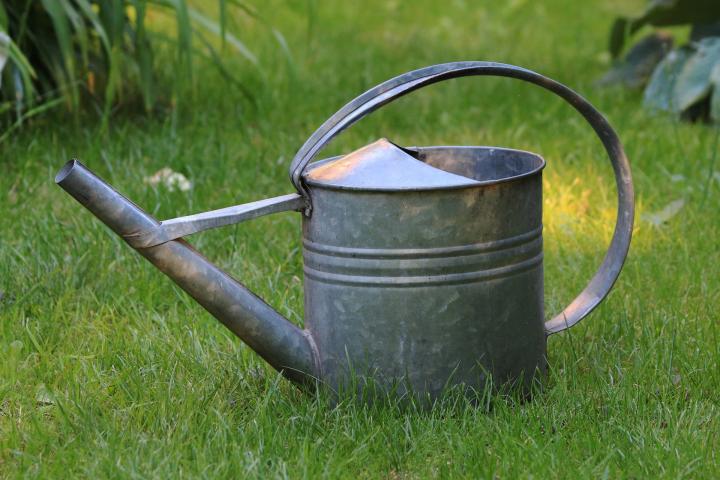
Let’s explore some smart ways to save water in the garden.
An inch of water a week, is that too much to ask for? It doesn’t seem like much but that is the optimum amount for growing most vegetables and ornamentals. If you spread that inch of water out over a 10X10 foot space it equals 62 gallons!
The National Drought Mitigation Center reports that right now 44% of the country is experiencing conditions that are abnormally dry or worse.
What’s a gardener to do, especially when some areas have restricted or even banned outdoor water use?
- Healthy soil with added organc matter is critical for a good garden and even more important during a dry season. Build up your soil by adding lots of compost. Good soil absorbs water like a sponge.
- Mulch is the gardener’s friend in many ways but in a dry season it slows evaporation. It takes 1 inch of water 8 times longer to evaporate from mulched soil than from bare soil. Mulch prevents compaction and acts as a cushion during heavy rainfall helping water to soak in rather than run off. Runoff not only wastes water but can pollute nearby streams. Bare soil can lose up to 3/4 of the rain that falls on it to runoff and evaporation. Mulch moderates soil temperatures and also squelches those weeds that compete with your plants for precious moisture.
Here are more tips on a water-wise garden.
Water Wisely
Let’s focus on the watering itself. What’s the smartest way to water our plants?
- Make the best use of your water by watering deeply but less often to encourage roots to grow down. Try to wet the soil to at least 6 inches down every 10 days or so.
- To discourage evaporation avoid mid-day watering.
- Sprinklers are fun but waste a lot of water. Soaker hoses and drip irrigation use much less water and deliver it close to the plants’ roots where it is needed. Keeping foliage dry has the added benefit of reducing disease problems.
- Soaker hoses are made of a porous material that allows water to slowly seep through it. Drip irrigation uses flexible tubing with tiny outlets called emitters that slowly drip water into the soil. After laying out the tubing or hoses in your garden, cover both systems with 2 inches of an organic mulch or use landscape fabric or plastic mulch. An inch of water slowly dripped onto the soil over a six hour period will soak in and not run off. Dig into the soil an hour after watering to see how deep the moisture went. Adjust the flow and timing accordingly.
- Once you have figured out the right watering schedule for your garden, the system can be automated using timers. Make every drop count but be aware, overwatering is just as damaging to plants as drought. See our chart on when to water vegetables.






